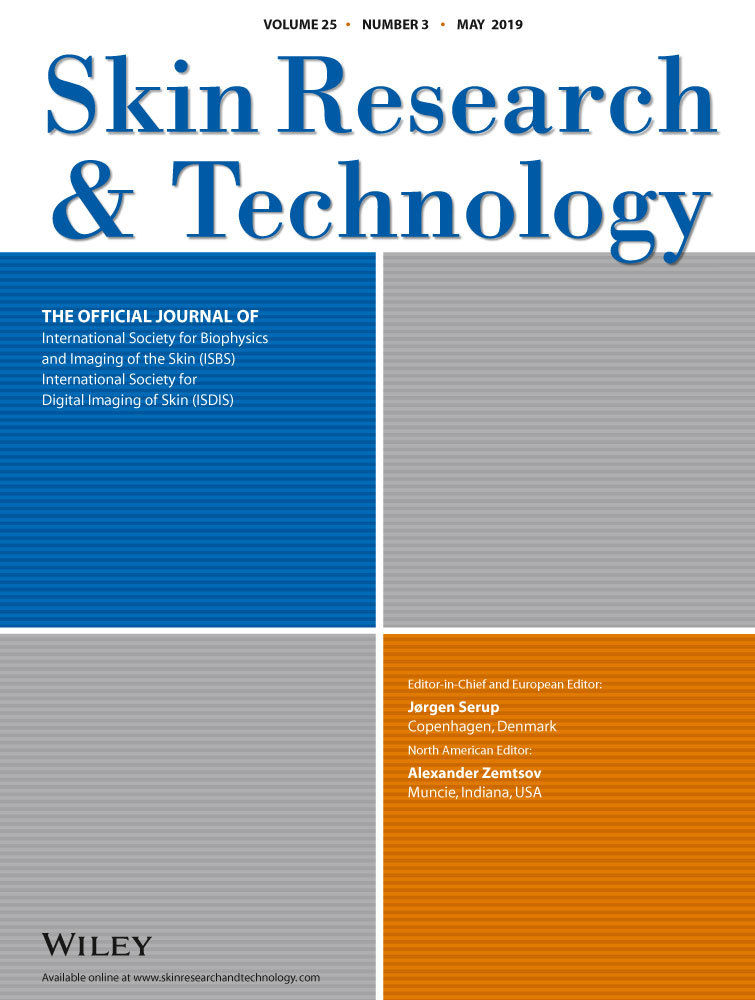Biophysical properties of striae rubra and striae alba in human skin: Comparison with normal skin
Abstract
Background
Striae distensae are common dermal lesions that progress through two different stages: the striae rubra, which appears to be erythematous, and striae alba, which is characterized by a hypopigmented feature. The clinical characteristics between striae distensae stages and normal skin remain unknown.
Objectives
We aimed to investigate the clinical characteristics according to stages of striae distensae in terms of their biophysical properties, using objective noninvasive measurements in comparison with adjacent normal skin.
Methods
Sixty-one healthy female subjects with striae distensae were included as follows: 30 with striae rubra and 31 with striae alba on the abdomen and thighs. Hydration of the epidermis and dermis, skin color brightness, and Erythema index were measured. Skin elasticity, roughness, and dermal echo-density of the skin with striae distensae and adjacent normal skin were also measured.
Results
Hydration of the epidermis and dermis showed no significant difference between the skin with striae distensae and normal skin. Brightness of skin with striae alba and normal skin was significantly higher than that of skin with striae rubra. Erythema index of skin with striae rubra was significantly higher than that of skin with striae alba and normal skin. Skin with striae rubra and striae alba had a rougher surface than normal skin. Elasticity and dermal echo-density were significantly lower in striae distensae skin.
Conclusions
Striae rubra and striae alba had similar biophysical properties in terms of skin hydration, elasticity, roughness, and dermal density. Moreover, striae distensae have less elasticity, more roughness, and lower dermal density than normal skin.




